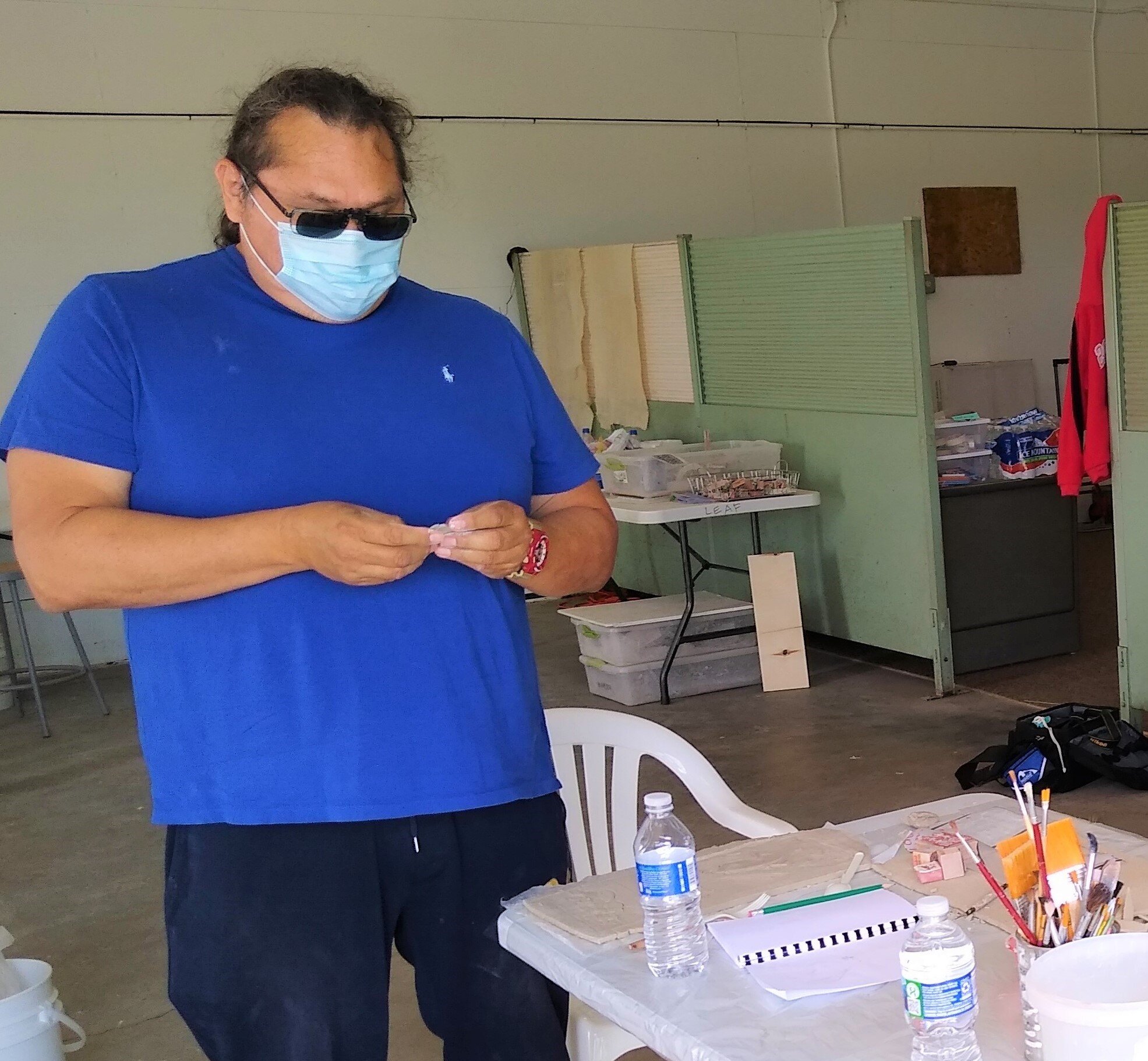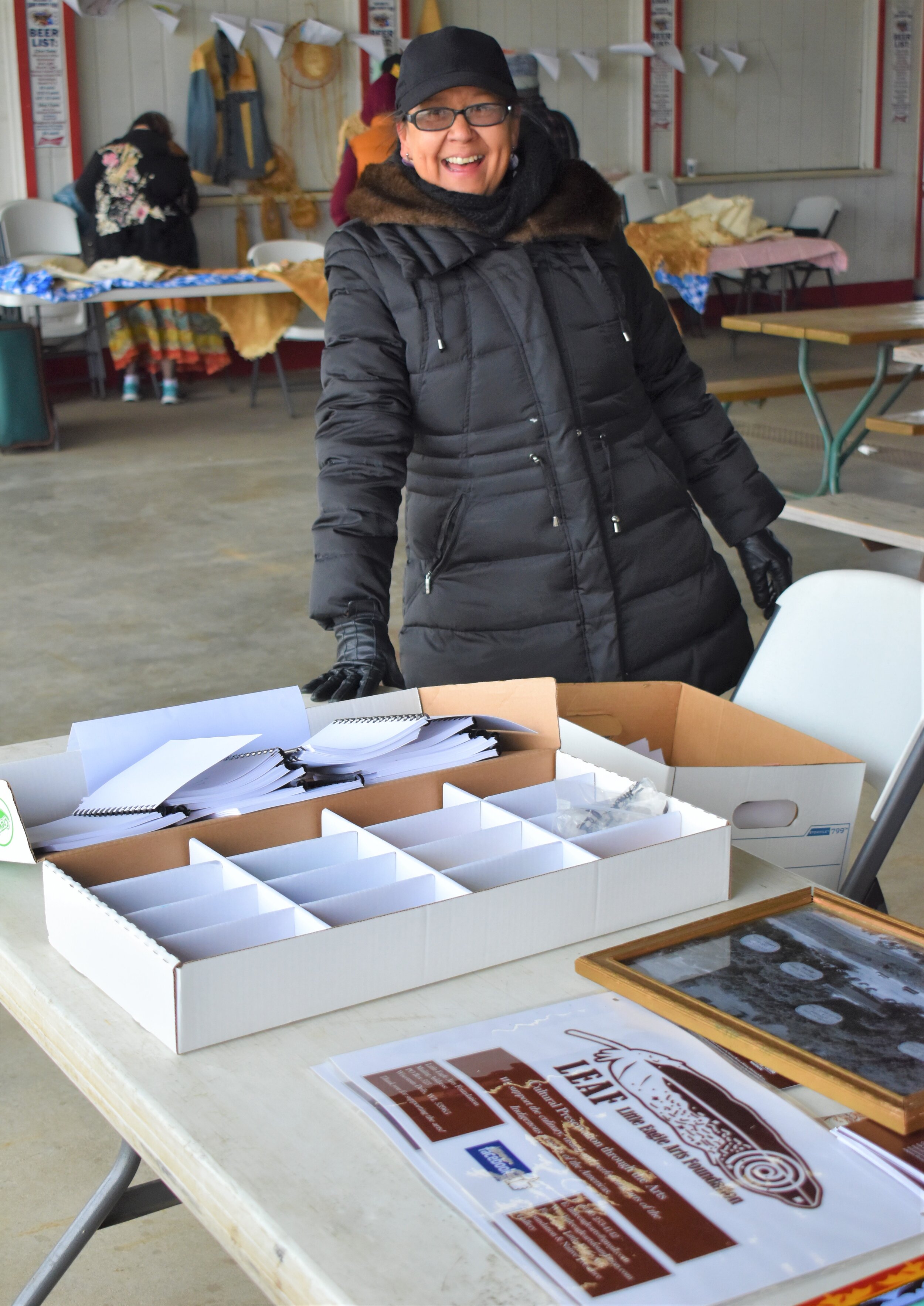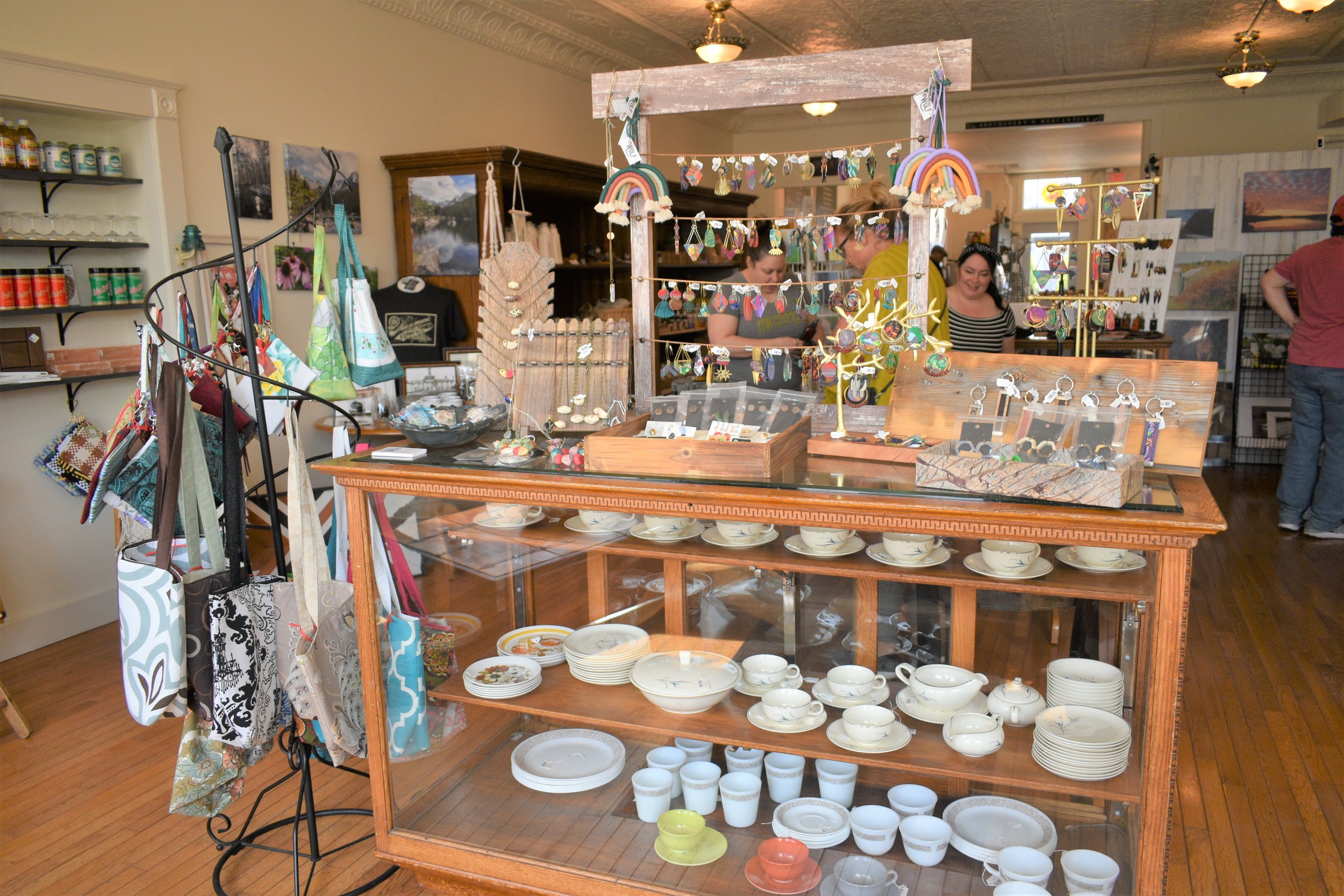Hoocąk families gather at Maa Wákąčąk perpetuating culture
Once hailed as the world’s largest ammunition plant and having been turned back over to its rightful caretakers, the Hoocąk (Ho-Chunk), the Badger Ammunition plant recently played host to several Hoocąk families for a cooperative art project.
The plant, built in 1941, would see munitions productions for several wars before being closed and considered excess to the Department of the Army.
Eventually, in the early 2000’s, the General Services Administration (GSO), the government’s real estate manager, would take in interests from other federal agencies, including the Bureau of Indian Affairs (BIA).
Today, over 1500 acres of the former Badger Ammunition is managed and overseen by the Hoocąk Nation via a land transfer.
Renamed Maa Wákąčąk (Holy land), the tribe has realized, for a lack of better terms, a cultural rebirth. Prairie and wildlife restoration have been in the forefront in the Hoocąk Nation’s plan for the property, and recently a cooperative art project led by the Little Eagle Arts Foundation.
With the Great Sauk Trail Southeast of Maa Wákąčąk, and the general area the indigenous lands of the Hoocąk, it was fitting that a mural depicting the sacredness of the land to the Hoocąk people be incorporated on the trail.
“I think it started with the knowledge that there was a public art opportunity on the Great Sauk Trail and that came through the River Arts Incorporated”, said Little Eagle Arts Foundation (LEAF) Founder and Director Melanie Tallmadge-Sainz. “They're the fiscal agent, where then the Hoocąk Nation donated and Sauk County donated.”
Somebody planted a seed in Melanie that there was a public art opportunity that the foundation might want to look into. That was in the spring or summer of 2019.
Melanie began exploring the opportunities, and holding a degree in ceramics, thought it would be “cool” to do a community tile project. “Both my parents worked here when it was Badger Ordinance. I know a lot of Ho-Chunk families worked here. So, there's a connection,” Melanie said.
Visiting Artist in Residence Muneer Bahauddeen and Project Apprentice Martina Patterson, worked with Hoocąk families that reside in Sauk County and the surrounding areas, to create ceramic tiles for a mural during the week of August 3rd – 7th. The mural will consist of three sections - Earth, Sky, and Water, and will speak to Ho-Chunk history and lifeways. The public art installation also honors land surrounding the trail.
“So, I wrote that up thinking of bringing the youth in to do the tile work and stuff.” Melanie said.
Then Covid-19 hit, shuttering the foundation’s planned activities and possibly the Great Sauk Trail project. “I was thinking, was this this project really going to happen?”
A concern was with the Sauk County Arts and Culture, because LEAF had put out so many grant projects to be funded with them, with all the cancellations, funds from them had to be returned. But there was hope.
Sauk County Arts and Culture released a second round of emergency funding that LEAF could apply for. Melanie decided that if LEAF was going to have any public art education programs and/or cultural arts programs in the near future, LEAF would need to make everything COVID friendly.
So, she wrote and submitted a grant to Sauk County Arts and Culture, stressing that it would be COVID friendly. Originally, it was going to be her and some volunteers working with the kids, but thought if LEAF could get families involved, great, but Plan B if they couldn’t. She wanted people knowledgeable about the art form like Bahauddeen and Patterson to help complete the project.
Maa Wákąčąk seemed a perfect venue to promote social distancing for this project. Fortunately, because LEAF obtained all the supplies, cleaning supplies, masks, shields, and the open-air space at Maa Wákąčąk, the project could be deemed COVID-friendly.
“This has been a collaboration between she (Project Apprentice Martina Patterson) and I,” said Bahauddeen. Melanie and her husband Felix have been working with Muneer and Martina to help bring in another woman artist to help. “She's also an art teacher. Her name is Kate Clausius, and she has been fabricating metal frames that will actually hold these pieces (ceramic tiles). I've yet to meet her but I understand the end project is going well,” Muneer said with a smile.
Muneer stated that he was thankful to be involved with the mural, a feeling echoed by Martina. “This is not only for me and artistic expression and the experience with it. I'm feeling the spiritual experience to this as well. It's an honor to be working with the Hoocąk Nation, feeling closely connected working with three families,” Muneer said. Not new to this work, Muneer works in residences all the time primarily with individual children and others.
Muneer added, “The difference here is I'm working with whole families and the attitude and the enthusiasm about working with whole families is just so much more calming and peaceful. I just truly enjoy it. I’m glad to be here and thankful that over the years, Melanie had remembered my work and called on me to do this project.”
Muneer and Martina are part of a flow group that is a connection between the rural and urban people in the Sauk and Milwaukee counties. “We are doing like cultural and artistic exchange, some people from Sauk County have been doing work in Milwaukee and vice versa. So, we're part of the flow,” Muneer said. “When they came down to Milwaukee, they came to my studio. That's when I first met Melanie. And things went on, and maybe two years later now, she's reconnected with me, and has brought me in on this project.”
Muneer pointed out the project has had Hoocąk families participate. The Eli Leonard, Joann Jones, Nela Stacey, Connie Lonetree, and Lenore Sweet families all worked on contributing tiles for the mural. “This is the last of the four. Martina, Melanie, and I, will actually do the touch up work tomorrow preparing these tiles for firing. We're trying to get these ready for next the Wormfarm Institutes’ Fermentation Fest in October.”
Working on their mural tiles that day, were members of the Sweet and Lonetree families. Each working with great focus, care and artistic expression, of what the land in their native homelands means to them. A sort of spiritual and cultural connection.
“I was just thinking, you know that we need to look more at how we try to keep our country and our air and water safe,” said elder Connie Lonetree. “You know, try to really work at improving our waste and how we live because we live so frivolous without thinking about what we're doing, about our waste and how we're using the water and that kind of thing. It's really hard to live real economically, and try to save our planet. I guess. It’s kind of worries me. We need to be greener. Yeah, it really needs to be improved 100% because it's just not happening. It's not happening.”
Lonetree shared that it was good to be out in the fresh air working on the mural for the Great Sauk Trail. She feels that it will bring a top of mind awareness to those that use the trail of who the original people were in the area, and what was important to them, their culture and connection to the land.
Daryl Lonetree, Connie’s son, accompanied her to the work on the project as well. “Well, my mom was talking about it for a couple of days. I didn't have any idea what this was about. So, I just drove her down. So, I guess she kind of knew what this was about. I got involved so I'm kind of just doing this little art piece,” said Daryl while working on his tile.
He continued, “So, I really enjoy it. It's a lot of fun. Other Ho-Chunk families have been coming down. There are different parts of the mural and then they've been doing their parts.”
When asked what the project meant to him Daryl shared, “Of course, it’s your piece that you're having in there, but also, you know Hoocąk are going to have kind of like a connection for people that come through the trail to see that. You know, the Hoocąk, they've always been here, this is sacred land to them.”
In working on his tile, Daryl has incorporated Maa (land). “There is the earth, sky, and water. So, I put in the Earth part because of belonging to the bear clan, I care about the earth.” He acknowledged that there's no wrong way of doing this, he just picked out this part because that's what he thought about.
“I'm glad that they are having this for Hoocąk community members to come together and do this mural and participate in it, what they're doing I think it's pretty nice. It's going to be on display sometime in the future. It's a good idea.”
Lenore Sweet, another elder there with family, found the project as “getting back to her academia roots”. “I haven't done this kind of activity in 50 years. Back in college. We had to do a lot of different stuff like this. I was an art major and so, you know, we had a lot of different activity and I haven't done anything like this in quite a while.”
Also enjoying being outside, Sweet said, “Especially now when we're kind of confined to our homes. You need your mind to be thinking about other things other than just, you know, the pandemic. Having the opportunity to work with family on the mural, she said, “We’re pretty close. Everything we do is pretty much always together.”
Lindsey Giese. Executive Director of River Arts Inc. in Prairie Du Sac, and a Friend of the Great Sauk State Trail, shared that there are a couple of levels of financial connection as far as this project goes.
When the trail was first being created, the River Arts Inc. eventually would take on an official title as administrators of Art Along the Trail. They initially were charged with public art pieces, but that developed into benches, mile markers, and any artistic element to the trail. “We are a part of curating that and those decisions,” Lindsey said.
Like Muneer and Martina, Lindsey’s involvement was one that evolved as well. “When the trail extended into what's now called the Sauk Prairie Recreation Area, which goes through Hoocąk lands, it was very important to honor that history of the Hoocąk people, and the Hoocąk Nation gave a very, very generous donation to make the trail happen.” With every donation that went to the trail, a portion of that was used for art recognition in the form of a public art piece. That is when she became involved, connecting the donor with an art piece that worked and made sense for them, and in turn honoring that gift.
Giese shared, “I helped to put out a call for artists, we definitely wanted a Hoocąk artist to create this piece. It's from a Hoocąk gift, it's next to Hoocąk land, and seems silly to do it any other way than to honor a Hoocąk artist.”
That was part of the call for artists and several submissions were received. Melanie's was one of them through LEAF. Eventually, through a River Arts Inc. committee and some Hoocąk Nation representatives, LEAF was juried and selected. LEAF’s art piece was selected to be the art piece recognizing the Hoocąk Nation gifts to the Great Sauk State Trail.
“So now we've been working with Melanie on making it happen and things have had to change because of COVID. But I know we're both excited. She's been wonderful and adapting to the times to figure out how to still do a collaborative art project with social distancing and safety in mind. She's done a great job to make some of those changes.”
Originally, the project was planned to involve students from different schools. Lindsey stated, due to COVID and alternatives in educating, Melanie found a great way to still include families. “That's kind of where I come in and help. I help with stuff not as glamorous as some of the art stuff as the creation, but the logistics of where will it go,” Lindsey said enthusiastically.
She continued, “It's a public state trail, so there are some regulations on how we how we can do the art pieces, where they can be, even down to the vegetation that's around it, and the signage and lots of details like that. I'm helping coordinate that with Melanie, but she is the one making all the magic happen. She's wonderful.”
There were several different funders, which Lindsey acknowledged was amazing, because the project itself is collaborative as is the funding, which she admitted was unusual. “For the other pieces on the trail, most of those were from a single donor, and just projects in general, most of them come from one significant donor and then maybe a couple other sources, but this was very much a group effort.” The Hoocąk Nation donation to the trail was the most significant and was followed up by Sauk County Arts and Humanities grants. Melanie acquired some of her own funding as well. It is not really the norm where artists will go out and seek extra funding. Melanie saw the need for additional funds in order to make the project COVID friendly and she met that need.
Melanie sees the mural and the Hoocąk Nation’s involvement as a way to educate the public about Native American culture. In her work with LEAF, having previously run an art gallery in downtown Wisconsin Dells, recalled that involvement and connection to educating.
“At the gallery, we would have people come up from Chicago with their families, and when I would tell them that I'm a member of the Hoocąk Nation, I'm Native American, some of those kids were just like, ‘really, you're a live Indian?’ Well, first of all, I don't call myself Indian because I've never been there. You know, it's on my bucket list,” she said with a chuckle.
“But yeah, there are real live indigenous people, you know, whose ancestors met Columbus before he came here or the Vikings before they came here, we're still here. And so that education we need, we need it, you know, and it's not just for the non-Indians, but also the broader community, and for our local Hoocąk families to have an opportunity to make a tile commemorated to their grandma who's Buffalo clan, and they depicted her name on a tile. That's a memory. The tile mural, we're constructing that because we want it to last a long time. So, we couldn't be more blessed to be first of all, out here at Maa Wákąčąk, to be able to bring our Hoocąk people out of their homes in a safe environment. So, it's just been a real blessing. And for me too, because having LEAF’s programs postponed or canceled altogether.”
Melanie pointed out there is an air of uncertainty that the COVID pandemic has brought about for everyone sharing, “I mean, I was even second guessing. What am I doing? Maybe I should go back, maybe I should get a desk job at a motel. But the Creator brought me here as an Eagle clan member and a member of our Hoocąk Nation to organize things that are good for our people. I put a lot of prayers into it. And it's happening, I'm very thankful. Very thankful. Every day I get to come out here is just, it's just so amazing. This is for our ancestors. This is their land.”
For more information visit LEAF, and the Fermentation Fest.














